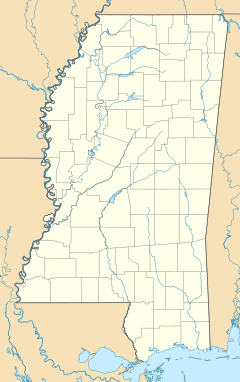Harrell Prairie Botanical Area facts for kids
Quick facts for kids Harrell Prairie Botanical Area |
|
|---|---|
| Harrell Prairie Hill | |
| Location | Scott County, Mississippi |
| Nearest city | Forest |
| Area | 160 acres (65 ha) |
| Established | 1980 |
| Designated: | 1976 |
The Harrell Prairie Botanical Area (also called Harrell Prairie Hill) is a special nature preserve in Mississippi. It covers about 160 acres (65 ha) of land. This area is a rare example of a tallgrass prairie, which is a type of grassland.
It is located inside the Bienville National Forest, near the town of Forest, Mississippi. Harrell Prairie is important because it's one of the last places where you can see the original Jackson Prairie Belt. It was named a National Natural Landmark in 1976. The Forest Service also made it a Botanical Area in 1980.
What is Harrell Prairie?
The Bienville National Forest has 68 small prairies. People sometimes call these areas "cedar fields." These prairies were saved from farming because lumber companies bought the land. Harrell Prairie is the biggest and best-preserved example of the Jackson Prairie in Mississippi.
The Jackson Prairie is like a separate piece of a larger grassland area. This larger area is called the Black Belt (or Black Prairie). It stretches across parts of Mississippi and Alabama.
Unique Soil and Plants
The soil at Harrell Prairie is special. It is alkaline, meaning it has a high pH (more than 7.5). This unique soil helps different kinds of plants grow here. These plants are not usually found in the nearby pine forests.
Many types of grasses grow in the prairie. Some common ones include Little Bluestem, Indiangrass, and Big Bluestem. You can also find Switchgrass and different kinds of Broomsedge.
Besides grasses, many other herbaceous plants grow here. These include colorful flowers like Yellow Coneflower and Eastern Purple Coneflower. You might also see Blazing Star, False Boneset, and different kinds of Milkweed. Wild Bergamot also adds to the prairie's beauty.
Visiting Harrell Prairie
Harrell Prairie is a nature preserve. This means there are no special trails or visitor buildings. You can park your car along the side of FS 515. There is a sign that shows where the area begins.
Many of the beautiful flowering plants bloom in late spring. This is a great time to visit if you want to see the prairie in full color. Since it is a nature preserve, visitors should follow a "leave no trace" policy. This helps protect the rare plants and keeps the area natural.


